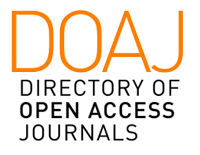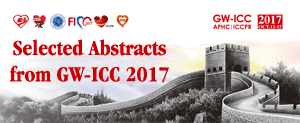[GW28-e1043]
Cardiac Hemodynamics and Mechanical Function of Left Atrial in Swine with Interatrial Conduction Delay
Jieling Cai Yumin Sun
Shanghai jing’an district central hospital, Fudan University, Shanghai, 200040, China
Objectives: To explore the correlation between P wave prolongation and the mechanical function of left atrial (LA), cardiac hemodynamics in swine with interatrial conduction delay (IACD), and consequently to provide a new insight into the knowledge of heart failure with preserved ejection fraction (HFpEF) at the level of the atrium in an experimental model, which might result from atrial dyssynchrony syndrome.
Methods: In eight male mini-swines, IACD was induced by radiofrequency catheter ablation (RFCA) in Bachmann bundle (BB). Echocardiographic LA volumes/functions, mitral E/A and E/e’ ratios were studied before, instantly after and three months after the ablation. Standard invasive Swan-Ganz was performed to measure right atrial pressure (RAP), right ventricular pressure (RVP), pulmonary artery pressure (PAP), pulmonary capillary wedge pressure (PCWP), and cardiac output (CO) before, instantly after the ablation and three months later respectively. These echocardiographic and hemodynamic measurements of studied swines were compared with themselves before and after the intervention in both acute and chronic phases.
Results: P-wave duration (PD) elongated after the intervention instantly and three months later (95.63±24.00 vs. 67.88±3.80ms and 97.13±25.00 vs 67.88±3.80ms, respectively; p<.05). With PD prolonging, PCWP demonstrated a significant increase after three months (15.88±3.06 vs. 11.50±1.12mmHg; P=.029) but it failed to reach a significant level instantly after the ablation (15.25±3.15 vs. 11.50±1.12mmHg; P=.072). Compared to the studied swines previously untreated, mitral valve late diastolic velocity (MV AV) decreased significantly from the moment RFCA being done to the time three months later (64.54±8.17 vs. 53.79±5.25mmHg; P=.028). In the subgroups, PCWP increased greatly (11.2±1.3, 17.2±2.4, 18.0±1.8mmHg, respectively; p<.05) in the group with PD prolongation but was nearly the same as before in the group without PD dispersion.
Conclusions: Swine IACD model was successfully established with statistically significant PD prolongation. Our findings suggested that PD prolongation increased PCWP in the chronic phase.














